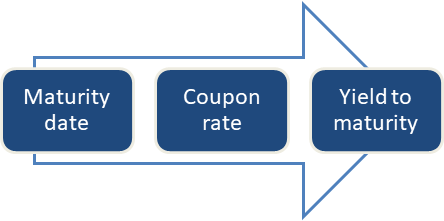What is maturity?
In finance, maturity is the date agreed upon by the parties to a transaction or financial instrument later to which it ought to be renewed, or it will cease to exist. The term also defines the pre-decided date where the term of a contract or agreement finishes to settle the total amount on a loan or bond back to the lender.
In other words, we can say that maturity is the date that pre-determines the lifeline of security, thus informing the issuer about the last date of paying their principal and interests. Once the maturity date is passed, the issuer becomes free from all the obligations related to the security. Therefore, maturity is closely associated with deposits, foreign exchange spot trades, interest rates, commodity swaps, forward transactions, loans, and fixed income instruments such as bonds.
Summary
- Maturity in finance refers to the date by which the term security is defined.
- The maturity date marks an end to all the obligations of an issuer towards their securities.
- There are mainly three categories of bonds based on maturity date- short-term bonds, intermediate bonds, and long-term bonds.
Frequently Asked Questions (FAQ)
Explain the term maturity date?
The maturity date can be defined as the due date of a principal amount of a note, draft, acceptance bond, or other debt instruments. On this date, the principal amount is supposed to be repaid to the investor. The date is usually mentioned on top of the financial papers or printed on the certificates of the instrument. On this day only the principal amount is paid, while the interests are paid throughout the life of the debt instrument to the investor. The maturity date also represents the termination date of an installment loan. It signifies that the loan must be paid back in full on the maturity date.

Image source: © Djbobus | Megapixl.com
How can bonds be categorised based on maturity date?
Bonds can be categorised into three categories based on maturity date:
- Short-term bonds
Short-term bonds are the ones that have a maturity period of one to five years. These bonds are generally issued by entities like investment-grade corporations, government institutions, and companies rated below investment grades. Short-term bonds are preferred by bondholders who want to preserve their funds for a shorter duration when favourable market conditions. In addition, short-term bonds are easily accessible than any other bonds, hence they are known to be very liquid.

Source: © Dtje | Megapixl.com
- Intermediate bonds
Intermediate bonds are neither too short-term nor too-long term. These types of bonds come with a maturity term of about five to ten years. As a result of an increased period, the intermediate bond yields more money than short-term bonds but not more than long-term bonds. Intermediate bonds are preferred by those investors who have a higher level of risk tolerance power. Obviously, with a longer period, the risk increases, and the investment is subjected to face a lot of ups and downs in the market.
- Long-term bonds
Long-term bonds are usually identified by the ones that have maturity terms of about 10 to 30 years. These types of bonds do pay a much higher yield than any short-term or intermediate bonds. Long-term bonds are preferred by investors who have higher levels of risk tolerance so that they can go through several market fluctuations over the life of the bond. Such investors aim to earn a huge revenue over a long period.
A long-term bond locks an investor with his investments for a relatively long period. However, that can be changed if there is a call facility or if the bond is a convertible one (convertible bonds).
What are the different types of maturities?
The different types of maturity are stated below:
- Maturity of deposits
The due date on which the principal is repaid to the investor is known as the maturity of deposits. The payment of interest is either done during the entire term of the investment or at maturity. Several interest payments are also made overnight, especially in most cases of Euro deposits.
- Maturity of bonds
A bond is known as a fixed-income investment. Maturity of bonds is the date when the lender must repay the full principal amount along with any other charges applicable to the investor. Failing to pay at maturity creates a negative credit rating at the issuer’s end and affects his future investment plans.
The term of maturity denotes when an investor receives payment from the bond in which he has invested. Bonds having a longer maturity period will pay you more interest and vice versa. At the maturity of a bond, the bondholder will receive the principal or the face value of the bond. Investors stop receiving interests beyond the maturity date.
- Maturity of foreign exchange
The maturity date for foreign exchange transactions is ideally considered as two business days. However, there is an exception with the transaction of US dollars and Canadian dollars, which settles on the next business day. The maturity date for foreign exchange trade is considered the date on which the final transaction takes place. It can even sometimes be more than the expected date.
How can relationship between maturity date, coupon rate, and yield to maturity be explained?
Bonds that have a long-term maturity offer coupon rates to investors similar to the quality bonds offered in the case of short-term bonds. The reason behind offering coupon rates are:
- Risk of defaulting loans of the government or the corporation increases.
- Growth of inflation rate with time.

Image source: Copyright © 2021 Kalkine Media
The factors mentioned above must also be taken into consideration while paying returns to the investors.
 Please wait processing your request...
Please wait processing your request...